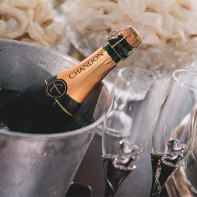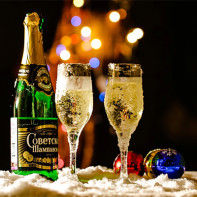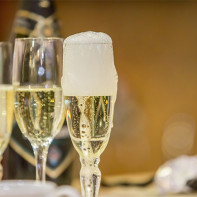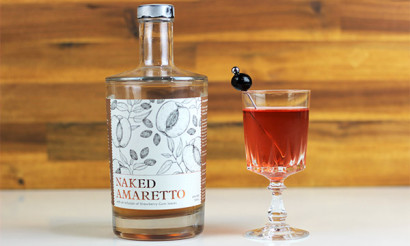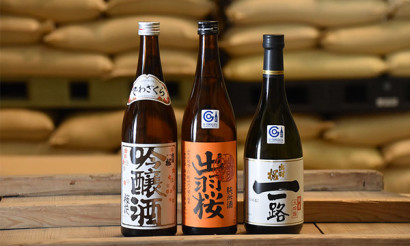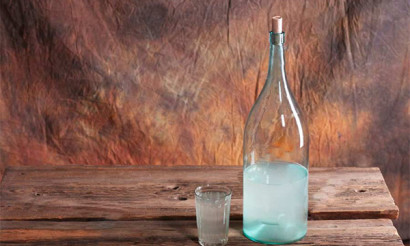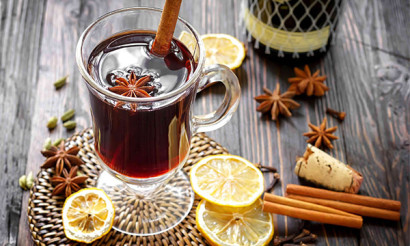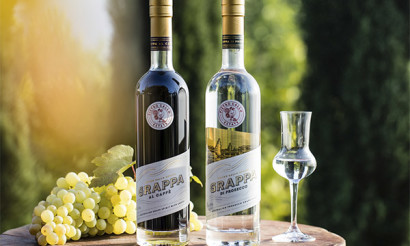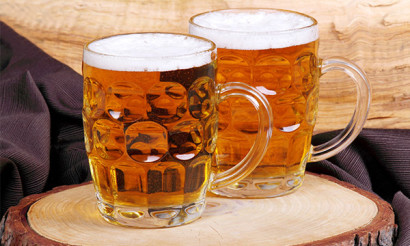How to drink champagne correctly
It's hard to imagine the New Year, an anniversary or entering a new position without a glass of golden sparkling wine. It has long been known as champagne, but in fact the name belongs only to the small batch, made according to a special recipe in the French province of Champagne. Proper serving and preparation of appetizers for this drink represents a whole art, successfully mastered by connoisseurs of sparkling wine.
- What is champagne
- Milestones of history
- Types
- The big sparkling wine producers
- Composition and calories
- Rules of serving
- What Glasses are used for drinking champagne?
- Holiday etiquette
- What to drink and snack on champagne
- Sweet
- Semi-sweet White
- Sweet and semi-sweet pink
- Semi-sweet
- Brut
- Can I Drink Expired Champagne?
- Can I Drink Champagne During Pregnancy?
- Champagne Cocktails: Recipes
- How to make champagne at home
- Benefits and Harms of Champagne
- How to open champagne if the cork is broken
What is champagne?
The peculiarity lies in the champagne production technique. While the noble wines rest in a deep cellar after fermentation, champagne undergoes a second fermentation process, but in a bottle, which is corked tightly. Their thick walls of dark glass securely hold the drink, and the cork is reinforced with a special metal mesh. This was not always the case, the drink has come a long way from random fermentation in a vat to obtaining a special name, which is jealously protected by law.
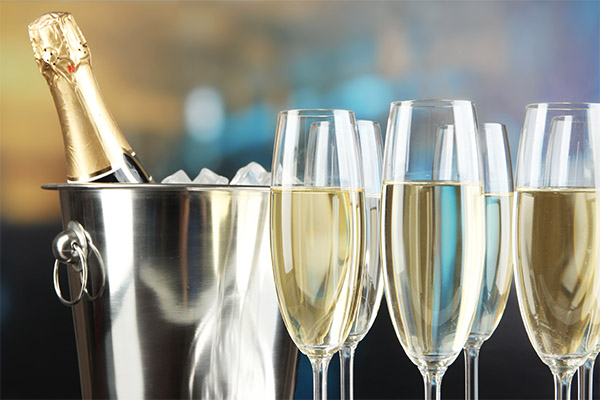
In order to comply with the benchmark, a set of strict rules have been introduced, which regulate the production of the beverage even at the stage of growing raw materials. Thus, there are certain rules of thumb which determine the terms and methods of pruning the vines, the degree of pressing the grapes, the time and the conditions of aging. Only three varieties are produced: Chardonnay, Pinot Noir and Mignot.
The elite varieties are produced only from our own raw materials, respecting all the subtleties of the recipe. The bottle itself is kept secret and is only handed down to the members of the family.
Historic milestones
In the monastic vineyards of the Champagne region special varieties were cultivated, from which wine for communion was made, deliveries to the royal court were made and some bottles were sent as gifts to the monarchs of neighboring states. The British were particularly fond of French wine. Gradually, new directions for the export of already familiar types opened up.
History is silent as to when exactly champagne appeared and who was the author of the recipe. Calling its creator Pierre Perignon, a Benedictine monk, it is necessary to specify that he owns only a number of improvements of the already obtained type of sparkling wine. The next step was the invention of specially shaped bottles, corks capable of retaining the still fermenting liquid inside the vessel and the development of a remuage process which made the drink crystal clear.
Types of
Outside the classification stands millesime champagne. It is made only from the grapes of a successful vintage, without mixing with others. Such an event occurs only 2-3 times per decade, so producers keep a special register of such years and, accordingly, elite or collectible batches of champagne. They don't end up in regular stores, but go straight to auction. The more affordable varieties are made by blending from the 3 approved champagne varieties with the addition of reserve wine from the last 2-3 years.
Gradually, several major varieties of champagne have been developed, each of which has acquired a huge army of admirers. The division is based on grape variety, sugar level and the color of the drink.
- Brut nature. Only the highest quality grapes are used and sugar is not added at all. It is added during fermentation, but never rises above 6g/l. The price for a bottle of this drink is high and is usually bought by gourmets who appreciate the tart and astringent taste of the natural product.
- Brut. It is more demanded on the market, the sugar level is 1,5%. It is distinguished by the rich aftertaste, distinctly layered in citrus, apple and peach flavors with a slight touch of cream. It did not gain popularity immediately, for a long time being in the shadow of semi-sweet varieties. With the right appetizer, it reveals its full flavor. In some cases it is served as an aperitif or with a main course.
- Extra-dry. Almost never seen on the market because of low demand. An intermediate variety, with less than 20g/L sugar.
- Dry. Semi-sweet champagne has the largest segment. It became a symbol of unbridled joy and holiday spirit. Its sugar content is as high as 35 g/l. It can be drunk as a separate drink, used as a basis for cocktails, experiment with appetizers and offer the guests a variety of dishes ranging from hearty meat to weightless desserts.
- Rich. The sweetness level of these varieties reaches 50 g/liter. Drinks in this segment are very popular for ladies' get-togethers or friendly parties with a fruity menu.
- Doux. These types require almost no supplementation, being a self-sufficient drink, have a wide range of flavors. The sugar content exceeds 50 g/l, the taste is rich and multilayered, with fruity notes.
The color of champagne is differentiated between white, red and rose.
Major producers of sparkling wines
Everyone liked champagne so much that attempts to get their own product followed. Many succeeded, and since the name was protected by law, each country came up with its own brand for celebratory sparkling wine.
- France. Besides the Champagne region with its exorbitantly priced collectible types of the drink, sparkling is also produced in other provinces. The most famous brands are Criman and Limoux.
- Italy is famous for Asti, Prosecco, Lambrusco, Franchacorta, Fragolino, Oltrepo Pavese. It differs in quality, the presence or absence of additives. Some types are so successful that they are exported.
- Spain gave the sparkling drink the name Cava. Of the varieties known are Martini Asti, Mondoro, Cinzano, Bosco, Emilio-Romagna.
- Germany also made a tangible contribution, creating an original line. The most famous in it is Sekt brand, which has 4 varieties according to the level of sweetness. It differs from its counterparts in other countries by its lower alcohol content, not exceeding 6%.
- In Russia the most famous is the Abrau Durso line. In addition to it, consumers are well known to Soviet, Russian champagne, Graf Golitsyn, Tamanskoe, Zolotaya Balka, Novy Svet, Usadba Petrovskikh, Fanagoria.
Composition and calories
This drink is made from grape juice with a special technology. There are no additives in it, except for a certain amount of sugar in accordance with the recipe. The caloric value also depends on the type of sparkling wine and varies from 55 kcal for the brut to 58 kcal for the dessert varieties.
A standard 0.75-liter bottle of semi-sweet sparkling wine contains about 660 kcal. Those who adhere to the principles of dietary eating should take into account that those same magic bubbles several times accelerate the absorption of carbohydrates.
Rules of serving the drink
Wine does not lose its taste qualities, even if you drink it on the hood of the car from plastic cups. Nevertheless, the entourage is of no small importance if there will be a gala reception or a formal meeting, at which a buffet is provided. A family holiday, too, will only benefit from a properly designed table and a competent serving of beverage.
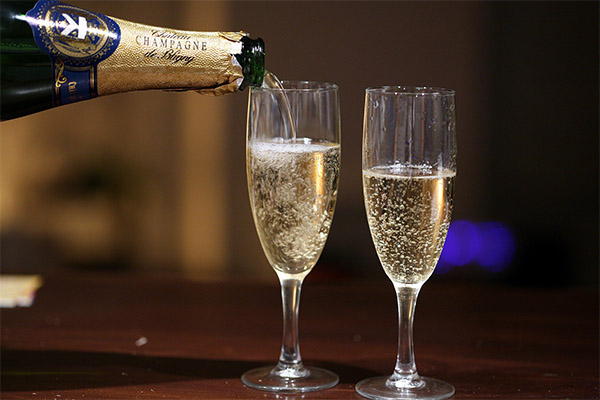
What glasses are used to drink champagne?
Sparkling wine is appreciated not only for its taste and aroma, but also for the aesthetic pleasure of the graceful paths of bubbles running to the surface, the amazing shimmer of light refracted in the crystal clear liquid.
To provide this aspect, choose elongated glasses on a high thin stem. The shape of the bowl may be straight, tulip-shaped, or slightly narrowed to the edge. The main thing is that the walls were completely transparent and kept the temperature of the drink, which is served chilled to +9 degrees.
Festive etiquette
Similar to the classic combination of colors, where only three shades are considered the norm, no more than three kinds of champagne are placed on the table. At the same time, it is desirable to observe the unity of the brand or country of manufacture.
Bottles are placed in buckets with finely pounded ice. If the table space allows, they are placed at equal distances from the edges. If the entire area is occupied by dishes, they can be placed on an additional table with fruit or candy, without having to move closely to the main table.
It is not customary to take a flute before the lady, or to serve it from a tray. The choice belongs to her, except at buffet when the drink is brought at her request.
Etiquette dictates that the flute is held in the left hand, leaving the right hand for gesticulating and tasting appetizers. If champagne is served as an aperitif, it is not customary to carry it to the banquet table, their drinks will be displayed there.
The bottle should be opened carefully, avoiding pops and foam splashing out. Appearances are good for movies, but for tasting a drink it is better to keep all the contents in the bottle without pouring it on the floor and those present.
What to drink and snack on champagne
Most stereotypes surprise true connoisseurs of sparkling wine. The traditional set consisting of champagne and candy or a large chocolate bar is the most unfortunate combination in terms of food compatibility.
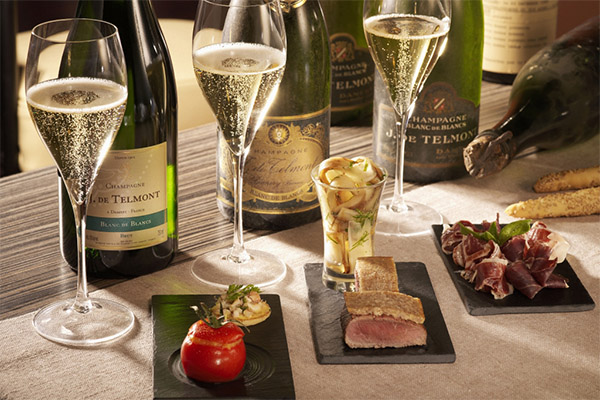
For each species, there is a different set of appetizers or desserts that accentuate the subtle bouquet, do not clash in taste, and perfectly complement the impression of the drink.
Sweet
The sugar content is such that these types are more like liqueurs. They are served with neutral flavors. They should not be added with sweets or confectionery. In the mouth remains a sugary aftertaste, discouraging further tasting. The most common accompaniments for these varieties are:
- clear slices of hard cheese;
- unsweetened desserts, mousses;
- nuts;
- fruit slices;
- Creamy ice cream with no additives;
- Cakes without an abundance of cream.
In order not to impoverish the taste of sparkling wine, there should be no coffee, dark chocolate and citrus on the table.
Semi-sweet white
It is the most popular and is served 7-8 times out of 10. For long meals, the appetizer is poultry, cauliflower, game, cream cheese, cookies, fruit and nuts. The most aristocratic variant is strawberries with cream or finely grated nut mixture, foie gras, canapés with pineapple and hard cheese. You can serve ice cream with a little caramel or fruit syrup.
Spicy, pickled and smoked dishes, an abundance of spices, and citrus fruits are completely excluded.
Sweet and semi-sweet rosé.
Its taste is considered the most refined and subtle. In order not to spoil the pleasure, you need to prepare a gentle meat to the table. Lobster, shrimp, truffles, venison, salmon will do. During the preparation of dishes the minimum amount of salt is used, spices are allowed only in the form of black pepper in a very limited variant. Chicken, turkey, and duck are also suitable as an appetizer. A slight sourness in flavor goes well with these dishes.
Semi-dry
There is much more room for culinary delights. Sparkling has a strong, full-bodied flavor that sets off white meats, cheeses, caviar, crackers, seafood tartlets and small portions of light salads. Pizza, fruit slices and nuts also make a fitting accompaniment to champagne tasting.
Brut
The tart, deep flavor of the aperitif calls for meat, cuts of poultry or fatty fish, caviar, and game. Seafood, game, cheeses, ham, smoked sausage, and sushi are an organic accompaniment to brut. Unacceptable any vinegar and lemon additives, citrus fruits, sour fruits, practically neutralizing the taste of the drink and giving it a very unpleasant aftertaste with an oversaturated acidity.
Can you drink expired champagne?
A true vintage has a very impressive shelf life. It can be stored under proper conditions for up to 25 years without loss of quality or flavor. The vintage that comes into the stores has a shelf life of 6 to 12 months on the label. The shelf life is not spelled out, because in its closed form the drink does not spoil for several years. Producers just protect themselves from misunderstandings and troubles by indicating the minimum period. Therefore, sparkling can be considered overdue if it has crossed the threshold of 8-10 years for ordinary types and 30-50 for collectible bottles.
It is worth to take into consideration: The rule for determining the validity of champagne is the same - if the color, aroma and taste have not changed, you can drink it without harm to your health.
Can you drink champagne if you are pregnant?
For women in the "interesting situation", doctors advise to completely eliminate alcohol, and here the prohibition encounters a powerful "I want". It is easier to give a pregnant woman what she needs, otherwise you can get a wide range of troubles - from bad moods to full-blown hysterics. It's all about the hormonal chaos that rages in her body while she's carrying a baby. And the harm from this will be much more than from a glass of sparkling wine. So it is better to just offer a little chilled wine in a beautiful glass, and whether she needs it or not, she will decide for herself.
Cocktails with champagne: recipes
Sparkling wine perfectly harmonizes with some kinds of strong alcohol. The most famous drinks are considered:
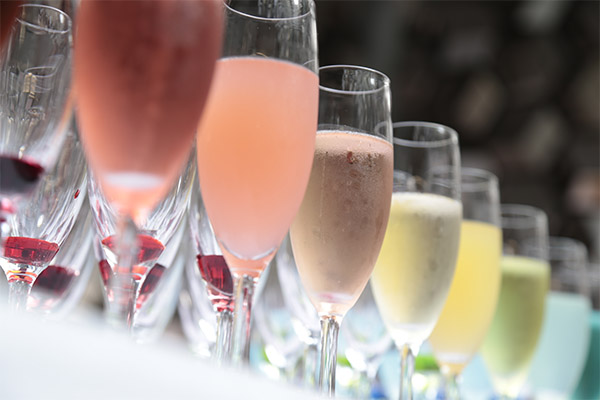
- Kir Royal, which, in addition to the main component, has raspberry and cherry liqueur.
- Northern Lights, where the strength is given by vodka, and a spicy note - lemon juice.
- Mimosa consists of sparkling and orange juice with the addition of citrus liqueur.
- Rossini embodies aristocracy and sophistication by combining strawberries and champagne in one glass.
- Tintoretto is famous for its rich color, which gives it pomegranate juice combined with sugar syrup.
- Golden Velvet is delicious and crafty, behind its spectacular appearance there is an impressive strength of beer against the background of the rich flavor of pineapple.
- Turquoise is popular because of its unusual hue and the combination of freshness and fruity notes in the taste when the base is combined with Chartreuse liqueur, vodka and lemon juice.
How to make champagne at home
If the grape harvest was successful, the summer was moderately hot and diseases did not affect the vines, then there is a chance to make home bubbly. The basis will serve the usual light wine, preferably from the variety Chardonnay, but if you want, you can take even a fruit from currants, gooseberries or raspberries as a base.
Important: It will be necessary to catch the moment when the wine is almost fermented, but has not yet stopped playing completely.
It is poured into champagne bottles and sealed with natural corks. It will be good if there is still a mesh muse from the previous holiday, which gives additional strength to the corking.
After that, the bottles are carefully placed in the cellar in a tilted position. The liquid must necessarily touch the cork, otherwise it will dry out and fly under the pressure of gas. Ageing time is 2-3 months. About 20-25 days before the planned date of tasting the bottle is set vertically, so that the sediment gradually moved to the bottom. It will have to be opened and poured carefully so that the wine retains its transparency.
The Benefits and Harms of Champagne
Alcohol was originally created as a medicine. Gradually it acquired quite a different purpose, becoming an indispensable attribute of noisy feasts or friendly get-togethers. Some of its useful properties have been preserved. If not in excess of reasonable limits, champagne is able to
- Relieve emotional stress;
- Serve as a good antioxidant;
- activate the digestive system;
- improve blood circulation;
- stimulate regenerative processes.
One glass of sparkling wine a day launches the program of rejuvenation and supports metabolic processes at a proper level, but only if we are talking about collectible high-quality varieties. Unfortunately, not every rich person can afford such an amount of sparkling wine, so it is better not to get carried away with it and leave it for special occasions.
The use of this product is contraindicated in gastrointestinal diseases with high acidity, ulcers, kidney failure, during breastfeeding, with individual intolerance to grape juice.
How to open champagne if the cork is broken
Not always the planned action goes according to the planned scenario, and often the solemn moment of opening the bubbly wine can be marred by the caprices of the cork. When it doesn't want to come out of the bottle, that's half the problem. If it is broken, you will have to be clever to get to the coveted drink. There are several ways to do this.
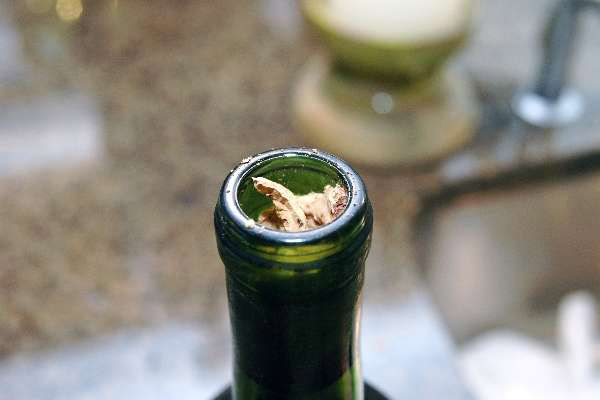
- A corkscrew will help to remove the stuck part, if the cork is of good quality and does not crumble when screwing it in.
- If there is no corkscrew, a self-tapping screw and pliers are used.
- A sturdy but thin knife that is pushed into the cork with force at a 45% angle opens up the air and the cork expels on its own under the effect of gas.
When the cork stubbornly closes the neck and does not yield to external influences, it remains to warm the bottle and shake it with force. You have to be mentally prepared for the fact that most of the drink will end up on the floor and on the clothes of the craftsman.
In the neglected case, when the cork does not come out, and it is necessary to get to the sparkling wine, the bottleneck is strongly hit with a heavy, sharp knife. The method is known as Hussar, in the original you need a saber or a Cossack sword. A well-calculated blow on the neck seam, if you strike from yourself and at a 45-degree angle, the thickened part flies off together with the cork, leaving no splinters.
Any non-traditional way of opening the sparkling wine carries a certain amount of risk, so it is better to leave the table in the corridor or the kitchen and change the holiday clothes for the old ones, which you won't regret to throw in the wash later and continue the celebration in style again, but with champagne.
«Important: All information on this site is provided solely for informational purposes only. Before applying any recommendations, please consult with a specialized specialist before using any of the recommendations. Neither the editors nor the authors shall be liable for any possible harm caused by materials."


